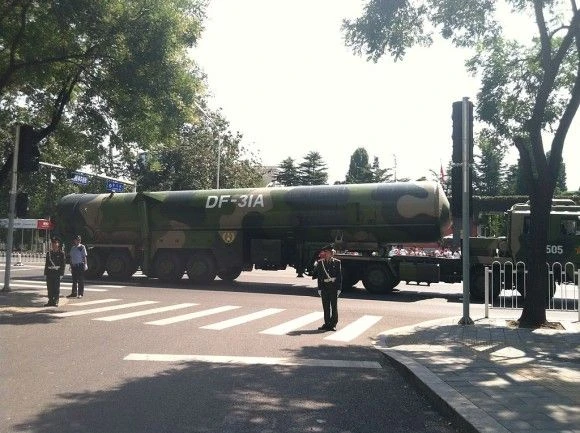Armed Forces
The U.S. reduces funding of Patriot system. What comes next for the Wisła program?
The U.S. Senate was submitted with Senate budget committee’s report suggesting a four-fold reduction of funds earmarked by the U.S. Army for modernization of the Patriot air-defense system. The reasons behind that decission are important for Poland, as Patriot is one of the two candidates for the new mid-range air and missile defense system Wisła.
The report, submitted for acceptance by the U.S. Senate on July the 17th by the Senate Committee on Appropriations (examining the expenditures of the U.S. federal government) leaves little doubt. It is recommending in clear terms, a four-fold reduction of the funding plans for Patriot air-defense system modernization by the U.S.Army.
Why is the Senate reluctant to fund Patriot modernization?
The expenditure plan of the U.S. Department of Defense for the FY 2015 (that expires on Sept. 30th, 2015) included a request of the U.S. Army to earmark USD 152.991 mln for the Patriot system modernization, which was a 117.957 mln increase in relation to FY14.
In response to that request, the (SAC) committee reminded of its reservations from last year's report in which they accused the modernization program with lack of precisely determined premises, failure to provide competitiveness and total incomprehensiveness of expenditure.
The Committee also expressed its concern that the cost of the needed Patriot modernization by 2018 has more than double in relation to the assessments from just twelve moths ago. It was also indicated that these expenditures will increase after launching the tender for the new fire control radar in 2017.
However, even without the funds for the new radar, the Patriot modernization in the coming five years is about to cost Americans more than USD 2.2 bln - or at least it could if the position of the U.S. Senate changes. This is however unlikely, because according to SAC Committee - the majority of the funding would be expended without implementing competitiveness, which "is neither in the interest of the U.S. armed forces, nor in the interest of the American taxpayer".
The SAC Committee has indicated that the U.S.Army is lagging behind with submitting the report to the Senate defense committee, that would outline a concrete plan for creating from the current Patriot system - a network-centric system (with open architecture) and that would present a strategy for conducting tenders, that enables a fully competitive action.
Taking into account these reservations the SAC Committee did not approve for earmarking the sum of USD 152.991 mln and proposed a four-fold reduction of the sum - to USD 37.991 mln, in line with the sum awarded in FY14.
What next for the Wisła?
The report submitted to the U.S. Senate does not leave the (Polish) MoD in a good situation. A month and a half before its publication (on June 30th 2014) Polish MoD has limited - to two - the number of bidders taken under consideration in the purchase of the Wisła system. The conclusions from the MoD's technical dialogue that introduced criteria, according to which the systems should be "operational and fielded within the NATO-countries armed forces" will forejudge the future of the Poland's Shield.
Such requirements have automatically eliminated from the program the Israeli offer (by the Sibat government agency), the MEADS consortium and the Polish Defense Holding PHO, representing national defense industry (which submitted its offer as a consortium leader teamed with the MBDA and Thales). The decision to select "operational" systems resulted in the MoD practically giving up on designing a "dedicated Shield" - for the Polish requirements - based on most advanced solutions and the offer of Polish defense industry and R&D sector, with the contribution of the foreign companies.
Instead, the MoD will have to rely on existing solutions and the "polonization" will be limited only to manufacturing, servicing and perhaps a share in future modernizations.
Before the launch of the program all parties were informed, that at the final selection the MoD will be focusing on the most modern technology transfer and industrial cooperation. The new requirements have resulted in selection the Eurosam consortium - offering the SAMP/T system (with Aster-30 missile) - and the Raytheon concern with existing Patriot system - for the procedure.
The Patriot question marks
It is worth asking whether the MoD - deciding upon leaving the Patriot system in the procedure - knew about the reservations towards the system and its modernization plans that were pointed out in the SAC Committee report? The Americans have themselves admitted that the system is not network-centric and does not have open architecture. For Poland it may equal to having problems with integration of other elements of the air-defense system, according to "plug-and-fight" rule.
It is also known that Patriot does not meet the requirement of the full radar coverage (360 degrees), as its non-rotating fire control radars AN/MPQ-53 provide a 120 degrees sector coverage. From the SAC report it is clear that funding of the work on a new, all-round radar may begin only in 2017, which means a waiting time of up to seven years for the new ready-to-use product as well as expending billions of U.S. dollars for the upgrades. All these plans could be buried by the U.S. Senate decisions however, as it has cut the Patriot modernization funds for three consecutive years (in FY 2013, 2014 and 2015).
If this approach to modernization funding does not change, Poland will probably be able to acquire the German batteries, retrofitted in the United States (let's remember: that offer was rejected by the MoD two years ago) - with an option for replacement with new ones, if only there will be countries who will fund it.
Today it is known how much by estimation these works can consume, by analogy to the development of the MEADS system, that was designed in response to the need for modernization of the existing Patriot system. The United States, Italy and Germany have spent approximately USD 4 bln.
What next?
The tender has not been launched yet (the final requirements and offers for Poland are unknown) and still the MoD's decision had an impact that lowered the position of the Polish defense industry and has limited the competitiveness that is needed, which will influence both quality and price of the final offers.
Most certainly the selection of such an advanced system will be assessed not only by the content but also from political point of view. But politics should not hide the long-term advantages for Poland. The political goals can be achieved with a few billion less on a pricetag or with increased benefits for the Polish industry. This rule should be applied to all modernization programs.
A good example for Poland should be Turkey, that for years is consequently building own defense potential together with developing the armament industry, by setting hight requirements for the foreign companies. Striving towards the best conditions, the government in Ankara has again delayed decision on selecting a partner, not excluding even the Chinese offer, to achieve a greater technology transfer in the next negotiations round.

